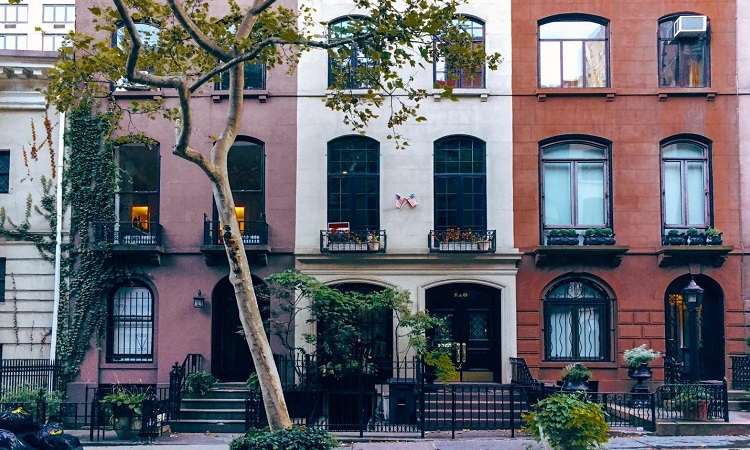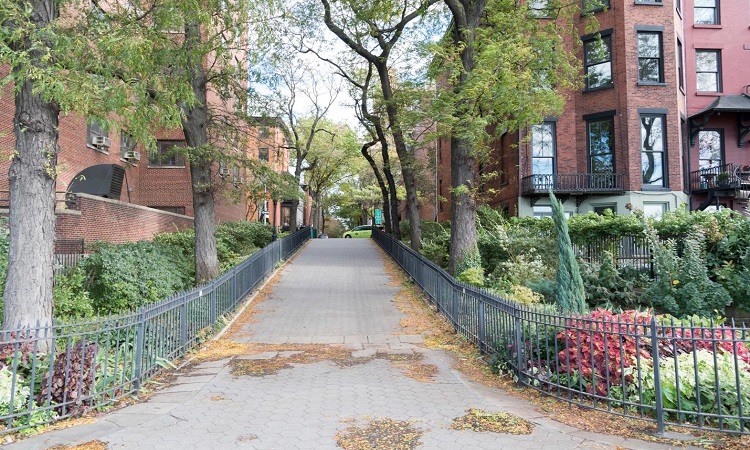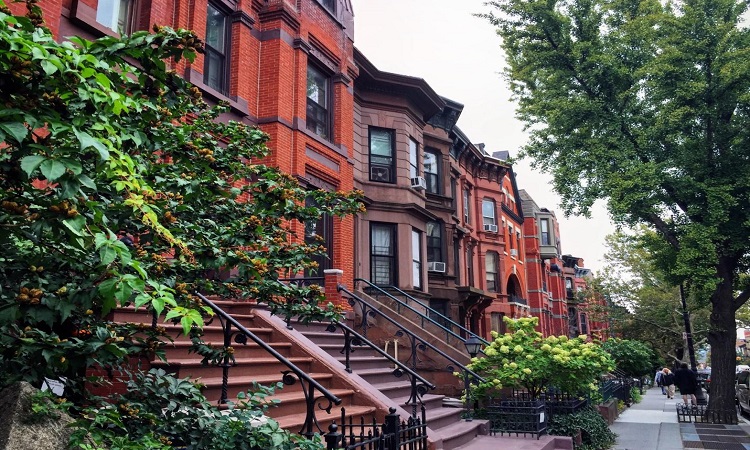When you are shopping around for your first home, you are likely to hear about a lot of different types of houses that you might consider. If you live in the New York City area, one of those types of houses is a brownstone house. But what is a brownstone and why are they so popular in NYC? Here is everything you need to know about brownstone houses.
1- What is a Brownstone
2- Where Did Brownstones Come From
3- Why are Brownstone Houses Popular in NYC
4- Brownstone House Made of
5- Types of Brownstone
6- Townhouse vs Brownstone
7- Are Brownstones Expensive
8- How to Maintain a Brownstone House
9- Pros of Living in a Brownstone
10- Cons of Living in a Brownstone
Brownstones are townhomes or rowhouses. Brownstones are typically brick structures with distinct windowsills, lintels, and front stoops that are also made of stone. The building must have at least two floors to be called a brownstone. Most brownstones are 3 or 4-storied buildings.
The front stoop is one of the main features of an NYC brownstone house that distinguishes it from others. These stoops were built for function, not fashion; they were intended to make the parlor, or entrance, floor much higher than street level, which was, at that time, filled with horse dung. Building these stoops helped keep the parlor floor clean.

Another distinctive feature of brownstones is the softness of their architecture, which enhances the ease with which they can be shaped into different styles while still keeping their distinctive features.
First and foremost, we should identify and clear up the common misconception that brownstones are always built with brownstones. The reality is only a tiny part of the building may have brown bricks.
A townhouse made of bricks and a layer of brownstone on the building’s façade is where the term “brownstone” is derived. Brownstone is actually sandstone and too soft to use in building construction.

The source of the material that gives brownstone houses their signature look is mainly Portland Brownstone Quarry, previously located in Portland, Connecticut. The building material was transported to New York City via the Connecticut and Hudson Rivers and stored in yards along the Hudson and East Rivers.
Although it is called brownstone, it was initially pink in color when the first cut. It turns brown over time.
The obsession with brownstone houses in NYC began in the mid-19th century. Romantic classicism triggered Americans’ obsession with brownstone houses, followed by the artistic movements that emphasized the importance of nature.
Moreover, during the Industrial Revolution, buildings went up in the city at a feverish pace, also largely due to romantic classicism. The movement was a kind of reminder that nature is not only essential but desirable as part of our everyday lives. Improved machinery empowered laborers to work safer, faster, and cheaper, which boosted the construction of brownstones in the city.
In short, the brownstone house in NYC was the perfect combination of urbanization and nature, and at affordable rates.
The main factor behind the brownstone’s popularity is its affordability. So how, then, did the brownstone become a symbol of wealth?
The Portland Brownstone Quarry permanently shut down in 2012 after three centuries of being the major supplier of NYC’s fine quality brownstone. As a result, the scarcity of the building material catapulted the value and worth of brownstone houses. With that being said, the chances of building new brownstones are now almost zero given the scarcity of the material. And anytime there’s scarcity, there’s high demand and, with it, high prices points. Consequently, brownstone houses have become a symbol of wealth because only those with money can afford to buy them.
Brownstones are made from a kind of sandstone that’s composed mainly of small bits of quartz and feldspar combined with clays, iron oxides, and, sometimes, calcite or silica.

This type of brownstone originated in Wisconsin in the mid-to-late 1800s. The first Milwaukee County courthouse was built from this type of brownstone.
This type is commonly recognized as Connecticut River brownstone and was primarily used in Boston, Chicago, Baltimore, New York City, Washington, Connecticut, and Philadelphia for making landmarks.
Various government buildings in New York, Pennsylvania, Maryland, Delaware, and West Virginia are built with this type of material. The Hummelstown Quarry in Hummelstown, Pennsylvania, was the primary source and supplier of this type of brownstone on the east coast.
New Jersey brownstone was once the largest source of brownstone in New Jersey and New York. Passaic Formation in Northern New Jersey is where this Brownstone was quarried.
This type of brownstone was made popular in South Wales during the Devonian age.
Brownstone and townhouses are often used interchangeably, but they are different. A townhouse is a tall narrow single-family residential structure that has at least two floors. Townhouses also share a common wall with the adjacent townhouse. Townhomes are built of marble, wood, limestone, or other materials.
However, if a townhouse has a façade coated with brownstone, it is a brownstone house.
Yes, brownstones are expensive now, primarily because they are difficult to find now that there’s no longer an active production of brownstone. Another reason behind the higher cost of brownstones is many are considered historic landmarks, which boosts their value.
Brownstone houses in NYC start at around $1.5 million and they only get more expensive from there. However, renters will find brownstone apartments relatively affordable since the building is divided into multiple rental units.
To increase the life and value of a brownstone, regular upkeep and maintenance are a must. To this end, the New York State Council on Arts has compiled some guidelines:
Brownstones are prominent on the Upper West Side and Park Slope. They’re also popular in Brooklyn neighborhoods, Brooklyn Heights, Fort Greene, and Carroll Gardens.
Charm: The charm and class of brownstones are no doubt one of the best parts of living in them. Wide stoops and long windows make these apartments ideal for enjoying New York neighborhoods.
Neighborhood: Neighborhood blocks lined with brownstones create a unique aesthetic to New York City.
Space: Brownstone apartments are spacious, whether you buy or rent.
Lack of Modern Amenities: Brownstones are old buildings, so their interiors are often also old and haven’t been modernized.
Walk Up: Brownstones don’t have elevators – you have to use stairs.
Cost: New York landlords are charging a handsome price for the charm of brownstones. These prices tend to be higher than townhouses or other multi-family buildings.
A brownstone house is not just a building made up of stones. It is more than just a building. Brownstone residents sit on a piece of history every time they sit on their front stoops. Consider buying or renting a brownstone if you, too, want to experience a little NYC nostalgia.